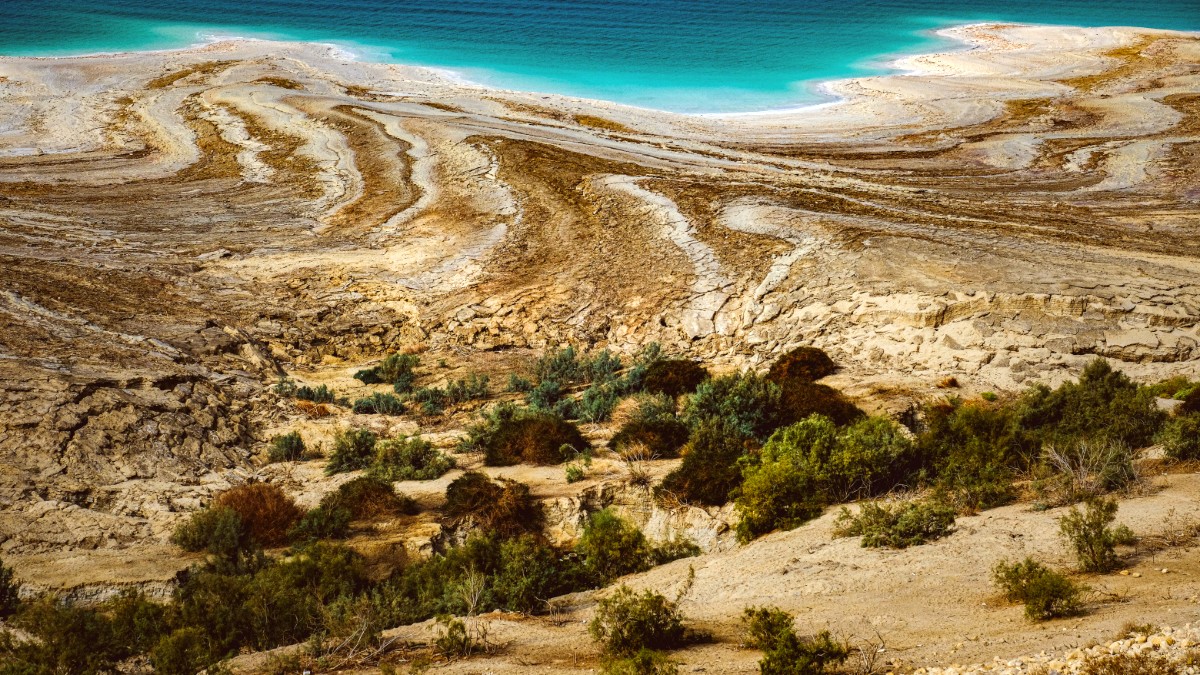
The water's extremely high salt content, ten times saltier than the ocean, means one floats effortlessly on the surface. This sensation, unlike swimming, is a weightless calm. One may recline and soak in the desert sun. Many visitors apply the mineral-rich mud found along the shores, with a belief in its therapeutic qualities for skin and body. This natural spa treatment leaves skin feeling soft and rejuvenated.
The water's high salt content makes it incredibly buoyant. However, it can irritate eyes or open cuts. Rinse thoroughly with fresh water after a dip.
Stay hydrated due to the desert climate.
The Dead Sea sits in the Jordan Rift Valley, a long depression formed by the divergence of the African and Arabian tectonic plates. This geological activity positions it as the lowest land elevation on Earth, with its surface dropping more than 430 meters (1,410 feet) below sea level.
This inland lake stretches approximately 50 kilometers (31 miles) long and 15 kilometers (9 miles) wide at its broadest point. It receives water mainly from the Jordan River. Evaporation in the hot desert sun is high, leaving behind a concentrated solution of salts and minerals. This continuous process creates the Dead Sea's unparalleled salinity, reaching over 34% dissolved solids. Along its shores, unique salt formations appear as the water recedes.
Over 430 meters (1,410 feet) below sea level.
Over 34% dissolved solids, far exceeding ocean water.
Bordered by the Judean Desert and Mountains of Moab.
Crystalline deposits shape the shore.
Receding water leads to sinkhole formations; observe safety signs.
The Dead Sea's geological characteristics influence its surrounding environment. The Judean Desert borders its western shores, while the Mountains of Moab rise dramatically on its eastern side. This stark contrast between desert mountains and the shimmering, saline lake creates striking scenic views, specifically at sunrise and sunset.
These minerals are thought to nourish the skin and offer relief for various conditions.
The receding water level of the Dead Sea poses an environmental challenge, with sinkholes appearing along the shoreline. Visitors adhere to marked areas and warning signs for safety and the preservation of the delicate ecosystem.
This geological marvel and its surroundings form an unique setting for relaxation and exploration.
The Dead Sea region is a deep historical footprint, woven into the fabric of human civilization and biblical narratives. For millennia, its unique environment drew people seeking refuge, resources, and spiritual connection. The landscape itself acts as a living museum, with archaeological sites narrating tales of ancient kingdoms, fervent religious communities, and epic battles.
The Dead Sea also features in biblical accounts, with the cities of Sodom and Gomorrah traditionally believed to have been located in the southern part of the region. While their exact locations remain debated, the stories underscore the long-standing human presence and narratives tied to this land. The area's history, from its earliest settlements to its role in modern contexts, creates a rich backdrop to your travel experience, fostering a greater understanding of this ancient and enduring landscape.
Ancient fortress, site of a historic Roman siege and heroic stand.
Archaeological site where the Dead Sea Scrolls were found.
Bethany Beyond the Jordan, a revered Christian pilgrimage site.
Mount Nebo presents panoramic views that, by tradition, Moses saw as he gazed upon the Promised Land. The mosaics within the memorial church on Mount Nebo offer intricate ancient artistry.
The extremely high salt content of the Dead Sea water supports your body, creating an unique sensation of weightlessness.
Visitors enjoy applying mineral-rich mud found along the shores, believed to benefit skin due to its high mineral content.
Many resorts offer extensive spa facilities, utilizing the sea's natural minerals in various treatments for relaxation.
Accessible from major cities in Israel (Jerusalem, Tel Aviv) and Jordan (Amman).
Public transportation, rental cars, and organized tours offer ways to reach resorts and attractions.
Desert climate with hot, dry summers and mild winters. Hydration and sun protection are important.